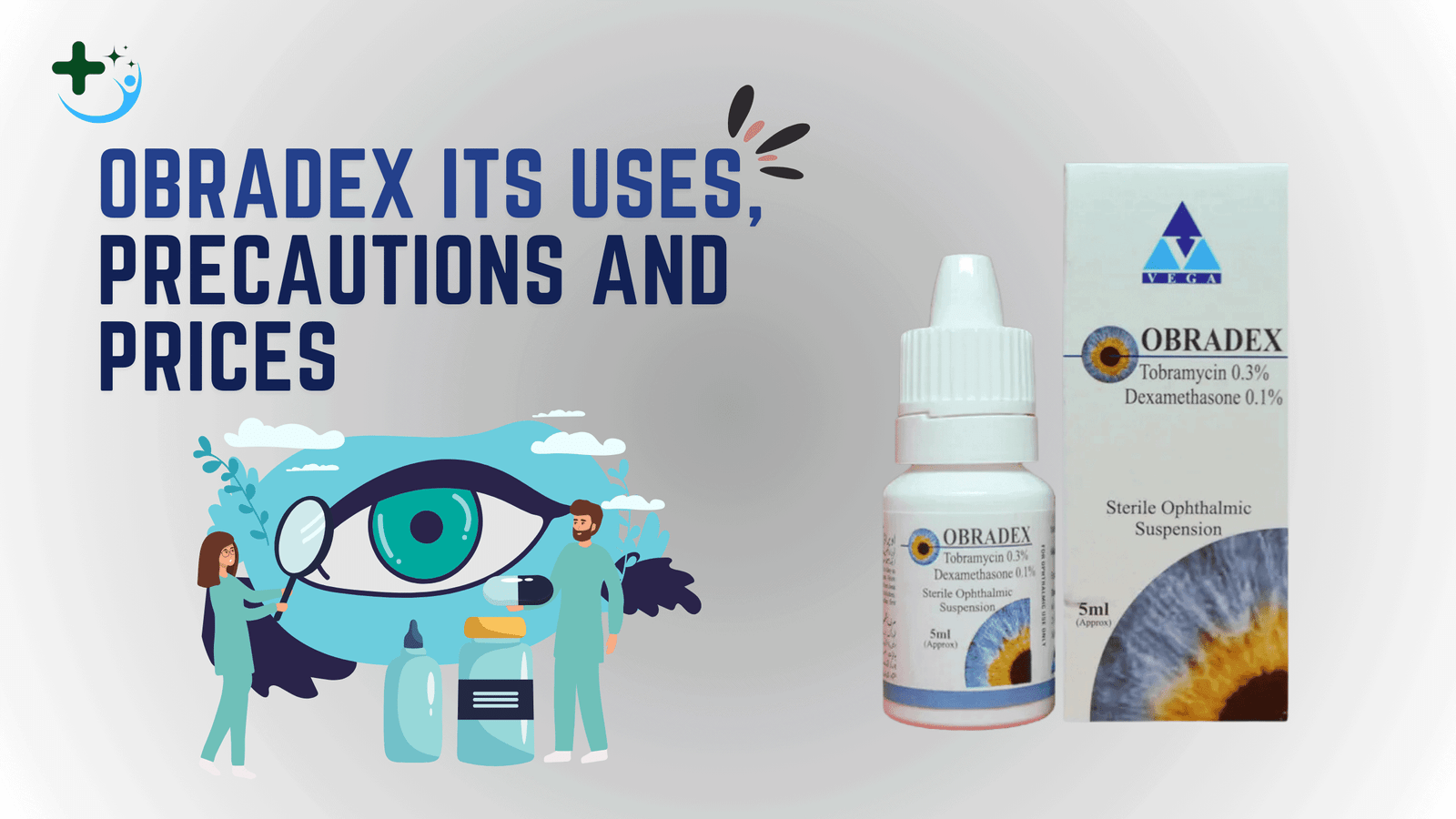Introduction
Obradex Eye Drops, a medication designed to address various eye conditions, have gained recognition for their efficacy in managing ocular inflammation and discomfort. This article aims to shed light on the uses and precautions associated with Obradex eye drops, providing valuable information for those considering or currently using this medication.

Uses
1. Inflammatory Eye Conditions
It contain the active ingredients dexamethasone and neomycin, making them particularly effective in treating inflammatory eye conditions. These may include conjunctivitis, keratitis, and other ocular disorders characterized by redness, swelling, and discomfort.
2. Allergic Conjunctivitis
They are often prescribed to alleviate symptoms of allergic conjunctivitis, such as itching, redness, and excessive tearing. The combination of dexamethasone and neomycin helps reduce inflammation and control allergic reactions in the eyes.
3. Post-Operative Care
The antimicrobial properties of neomycin contribute to its effectiveness in reducing the risk of post-operative complications.
Precautions
1. Prescription and Consultation
They are a prescription medication, and it is crucial to consult with an eye care professional before use. The healthcare provider will assess the specific eye condition and determine the appropriate dosage and duration of treatment.
2. Avoid Prolonged Use
Prolonged use of this drops without medical supervision can lead to adverse effects. It is essential to adhere strictly to the prescribed dosage and duration to prevent complications such as increased intraocular pressure and cataract formation.
3. Allergy Precautions
Individuals with known allergies to corticosteroids or aminoglycoside antibiotics, such as neomycin, should inform their healthcare provider before using this drops. Allergic reactions may include itching, swelling, or redness, and an alternative treatment may be recommended.
4. Monitoring Intraocular Pressure
Regular monitoring of intraocular pressure is crucial during the use of Obradex eye drops, especially in individuals with a history of glaucoma. Elevated intraocular pressure can be a side effect of corticosteroid use and should be promptly addressed by a healthcare professional.
5. Pregnancy and Breastfeeding
Pregnant or breastfeeding individuals should consult their healthcare provider before using Obradex eye drops. The potential risks and benefits of the medication in such cases should be carefully evaluated.
Side Effect
It’s important to note that not everyone will experience these side effects, and the severity can vary from person to person. If you are prescribed Obradex eye drops and notice any unusual or persistent symptoms, it is essential to contact your healthcare provider. Here are some potential side effects of this drops.
1. Eye Irritation
Some individuals may experience mild irritation or a burning sensation in the eyes after using Obradex. This is a common side effect and usually resolves on its own. If the irritation persists or becomes severe, consult your healthcare provider.
2. Blurred Vision
It can cause temporary blurred vision in some people. It’s advisable not to drive or operate machinery immediately after using the drops until your vision has cleared.
3. Increased Intraocular Pressure
Prolonged use of corticosteroid-containing eye drops like it may lead to an increase in intraocular pressure. This can be a concern, particularly for individuals with a history of glaucoma. Regular monitoring by an eye care professional is essential to detect and manage any increase in pressure.
4. Allergic Reactions
Allergic reactions to this, though rare, can occur. Signs of an allergic reaction may include redness, itching, swelling, or a rash around the eyes. If you suspect an allergy, discontinue use and seek medical attention promptly.
5. Infection Risk
While that contains an antibiotic (neomycin) to prevent infection, there is still a potential risk of developing an eye infection. If you experience worsening redness, discharge, or pain, contact your healthcare provider as these could be signs of an infection.
Prices
You can get Obradex Eye Drops in 188 PKR from here.
Conclusion
Obradex eye drops offer an effective solution for managing inflammatory eye conditions, providing relief from symptoms and promoting healing. However, like any medication, it is crucial to use Obradex under the guidance of a healthcare professional, adhering to prescribed dosage and duration. Understanding and following precautions will contribute to the safe and effective use of Obradex eye drops, ensuring optimal eye health for those who require this treatment. If you need any consultancy regarding medicines you can contact Health To Wealth.
FAQs
1. What is Obradex used for?
Obradex Eye Drops Uses It is also prescribed for allergic conjunctivitis and as a post-operative measure to prevent infection and reduce inflammation.
2. How does Obradex work?
It contains dexamethasone, a corticosteroid that reduces inflammation, and neomycin, an antibiotic that helps prevent and treat bacterial infections. Together, they work to alleviate symptoms associated with various eye conditions.
3. Can I use Obradex without a prescription?
No, it is a prescription medication. It should only be used under the guidance of an eye care professional who will assess your specific eye condition and determine the appropriate dosage and duration of treatment.
4. How often should I use Obradex eye drops?
The frequency that use will be determined by your healthcare provider. Generally, it is applied as directed, and adherence to the prescribed dosage and schedule is crucial for optimal effectiveness.
5. Are there any side effects of Obradex eye drops?
Yes, like any medication, it may have side effects. Common side effects include mild eye irritation and blurred vision. However, more serious side effects such as increased intraocular pressure or allergic reactions are possible. Consult your healthcare provider if you experience any unusual symptoms.
Disclaimer
The information provided on this blog regarding medicines, their uses, precautions, side effects, and prices is solely based on data collected from public domains. We are not a doctor or medical professionals. While we strive to provide accurate and up-to-date information to our viewers. We can’t guarantee the absolute accuracy or completeness of the data. We do not assume any responsibility for any consequences arising from the use of the information on this blog.
Thank You

